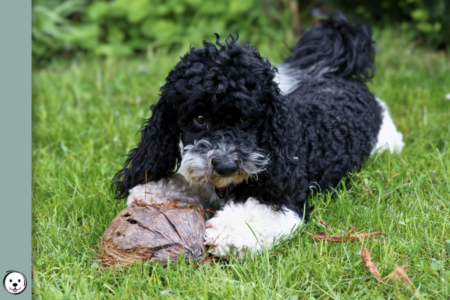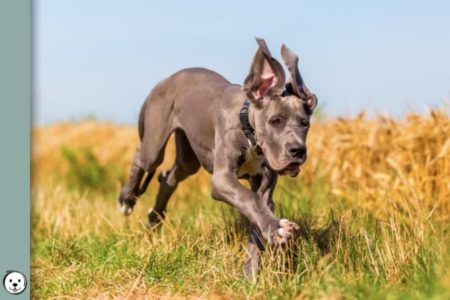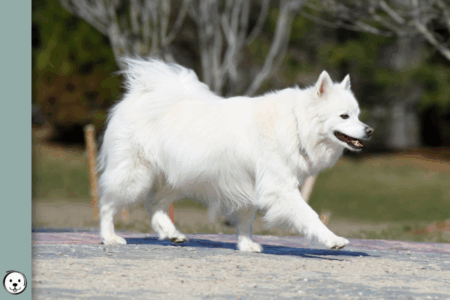An overview of Appenzeller Sennenhund colors and their genetics.
| E/E ky/ky normal | B/- black | b/b brown |
| at/at tan point |  black-based tan point & white black tricolor |  brown-based tan point & white brown tricolor “havana“ |
Appenzeller Sennenhund Color Overview
A short discussion of breed standard patterns in the Appenzeller Sennenhund:
Black Tricolor
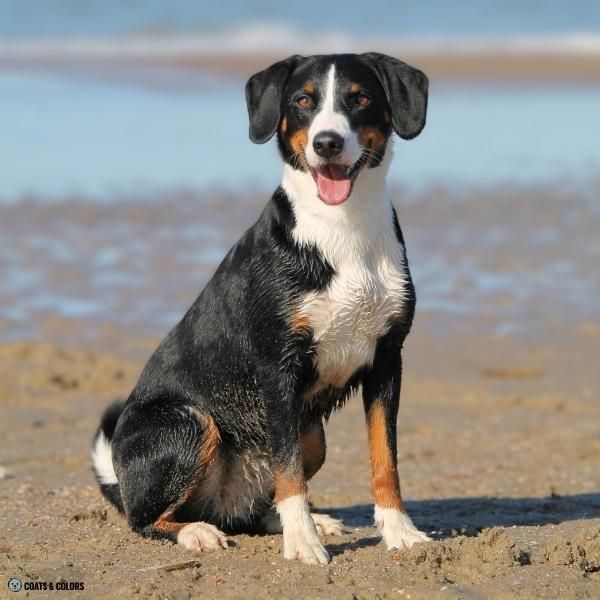
These dogs all come with a black & tan pattern plus some white markings, likely from a whitehead pattern.
In black tricolor Appenzellers, the mantle is black and the tan points are an orangey red.
| E LOCUS | K LOCUS | A LOCUS | B LOCUS |
|---|---|---|---|
| E/E | ky/ky | at/at | B/B |
| E/E | ky/ky | at/at | B/b |
Havana Brown Tricolor

These dogs are also tricolor with a tan point pattern plus some white markings.
The only difference is their main color is brown.
| E LOCUS | K LOCUS | A LOCUS | B LOCUS |
|---|---|---|---|
| E/E | ky/ky | at/at | b/b |
Appenzeller Sennenhund Color Genetics Summary
Not every breed has all the possible alleles associated with coat colors in their gene pool.
Every breed has preferred patterns or colors and patterns they deem undesirable, leading to disqualification in the show ring or exclusion from breeding.
Appenzellers are one of the breeds that don’t come with a lot of color variety.
The only standard color listed on the AKC website is “black, brown & white“. The FCI standard states Appenzellers are “black or havana brown with reddish-brown and white markings“.
Havana brown dogs were not included in the Appenzell Mountain Dog standard until 1982.
But breeders are still instructed by their breed clubs never to mate havana brown with havana brown, so to not produce all brown litters on purpose.
These are color traits that occur in the Appenzeller Sennenhund:
| E LOCUS | E = normal pattern e = recessive red (rare) |
| K LOCUS | ky = normal pattern |
| A LOCUS | at = tan points |
| B LOCUS | B = black b = brown (“havana“) |
| D LOCUS | D = normal pigment |
| S LOCUS | S = no spotting sP = white spotting (rare) |
| M LOCUS | m = non-merle |
Appenzeller Sennenhund Colors
What colors can Appenzeller Sennenhund come in?
Eumelanin
Appenzeller Sennenhunds come with black eumelanin (B/-) or brown eumelanin (b/b).
The pigment in havana brown tricolor ranges from dark chocolate brown to a lighter reddish brown.
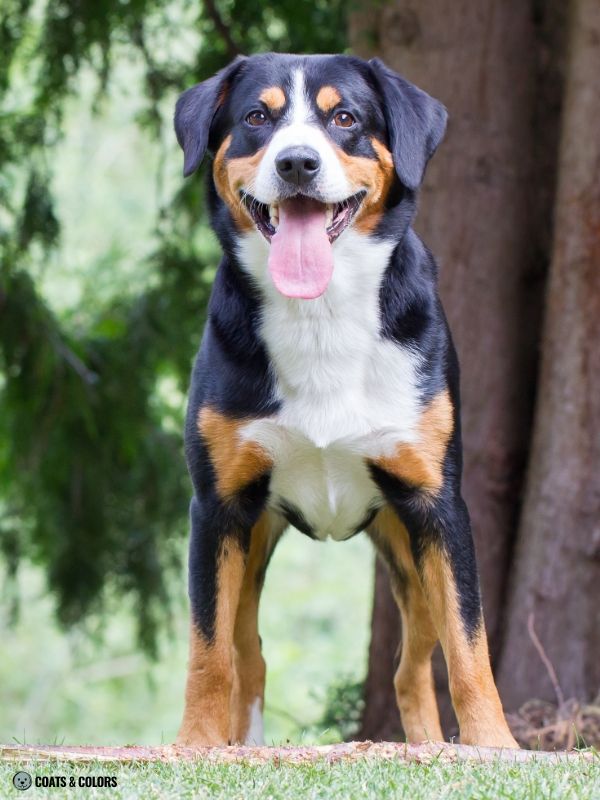

Phaeomelanin
The tan markings in Appenzeller Mountain Dogs come in a range of shades from orangey red to red. The AKC calls the color of tan points “brown” which is not correct in genetic terms.
The points in tri-colored dogs always get their color from phaeomelanin (red pigment) while only the mantle gets its color from eumelanin (black or brown pigment).
According to the breed standard, an Appenzeller Sennenhund has to have visible red spots above the eyes and on the cheeks, on their chest and legs. They forgot to mention that tan-pointed dogs also always have red markings under their tail. The tan markings may become paler with age.


White Spotting
The Appenzeller Sennehund comes with a pseudo-Irish pattern.
Their nickname in Switzerland is “Bläss” in reference to their white blaze.
The breed standard is very specific when it comes to white markings in the Appenzeller:
Dogs should have a white blaze, some white around the muzzle, and a white chin and throat that connects to a white chest patch. All four legs should be white as well as the tip of the tail.
Some dogs have a full or half collar or a white spot on nape of neck which is tolerated but not desired.
Appenzellers are not truly Irish-patterned. Instead, the Irish-like spotting was likely achieved by breeding for a moderate whitehead pattern.
The breed standard lists extended white patterns such as a broad white collar or white boots as faults. The same applies to too small white markings such as a broken blaze or divided white on the chest.
Whitehead patterns tend to produce asymmetrical and somewhat random white markings. But selective breeding can produce dogs that on average have “the right amount of white“.
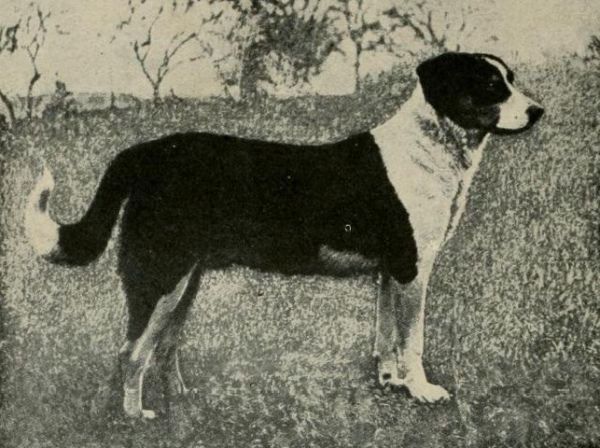

Today, there is no piebald spotting in purebred Appenzeller Sennenhund.
But in the past, there were dogs called “Schilt” were predominantly white with some patches on the head and body. Dogs with white legs, a white underbody, and a solid mantle were called “Mantelschilt“.
These dogs were most probably piebald and are considered to be the ancestors of the Appenzeller. In the early 1900s, Schilts were regularly used to establish the Appenzeller Sennehund we know today.
White-spotted puppies have been eliminated from the purebred Appenzeller. Thus, the Appenzeller “Schilt” is considered to be almost extinct today.
And even on remote farms in Switzerland, there are only a few such specimens left.
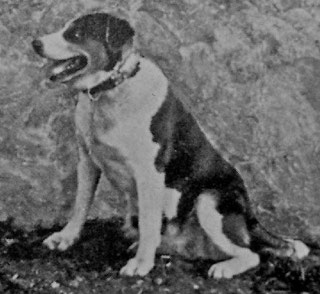
Eye Color
Brown dogs typically have somewhat lighter eyes than black dogs.
This is why most Appenzelles have brown eyes while havana brown ones have lighter brown or yellowish eyes. Puppy eyes tend to be a greenish blue in havana brown dogs.


Nose Color
Nose color is always determined by the color of a dog’s eumelanin.
Black tri Appenzellers have black noses, and brown tri dogs have brown noses.
Black and tan dogs sometimes have slightly fading nose pigment (reason unknown).
Appenzeller Sennenhund Patterns
What patterns can Appenzeller Sennenhunds have?
A Locus
This breed is fixed for a tan point (at/at) pattern.
K Locus
All Appenzellers can express their A locus pattern, they are fixed for normal pattern expression (ky/ky).
E Locus
Again, all Appenzellers are fixed for normal pattern expression (E/E).
E/Eky/kyat/atwhite spottingB/B
B/bblack tricolor
b/bbrown tricolor
Appenzeller Sennenhund Mismarks
Naturally, the Swiss landrace which served as the ancestor of today’s Appenzeller came with a variety of different color patterns. They sometimes had a red and white coat (“Frisch”) or large white markings (“Schilt”). According to old descriptions, some dogs even had brindle points (kbr) or no white markings at all[4].
Today, these are still some non-standard colors found in the Appenzeller Sennenhund:
Red & White
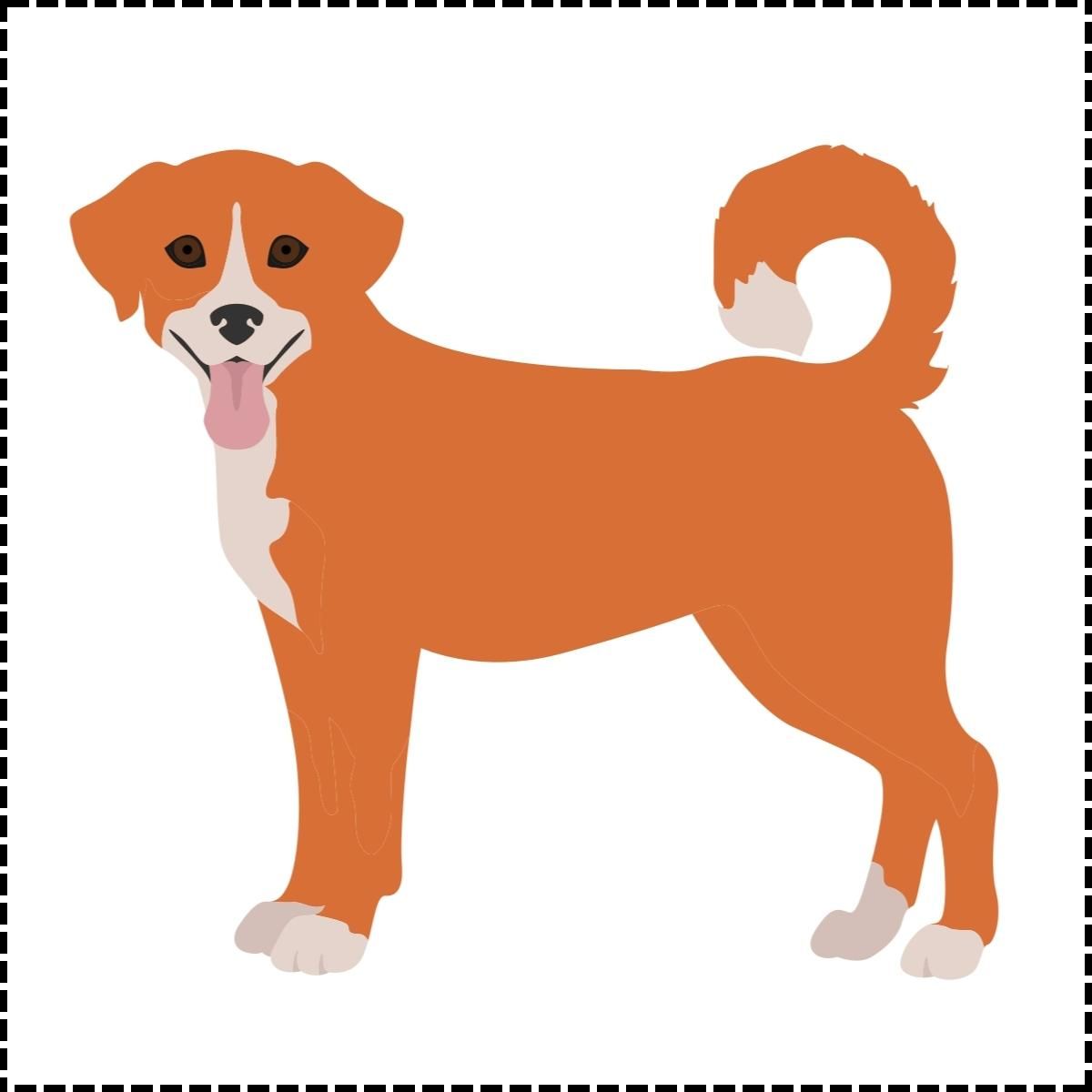
Bi-colored dogs with a red and white pattern can be found on Swiss dairy farms.
These dogs are called “Frisch” or “Toggenburger Sennenhund“. Some of these dogs show black shading in their puppy coat indicating they are clear sable (Ay/-).
However, a sable pattern was easy to eliminate from purebred Appenzellers since sable is dominant over tan points (Ay>at).
Meaning that at least one parent would have to be visibly sable to produce a sable puppy.
But solid red can also be produced by recessive red (e/e). When breeding from two carriers (E/e x E/e) some puppies may end up with a solid phaeomelanic red coat (e/e) like this.
Recessive red is a known trait and mismark in other Sennenhund breeds, so it likely occurs at a low frequency in Appenzellers, too.
| E LOCUS | K LOCUS | A LOCUS |
|---|---|---|
| e/e | ||
| E/- | ky/ky | Ay/- |
Piebald
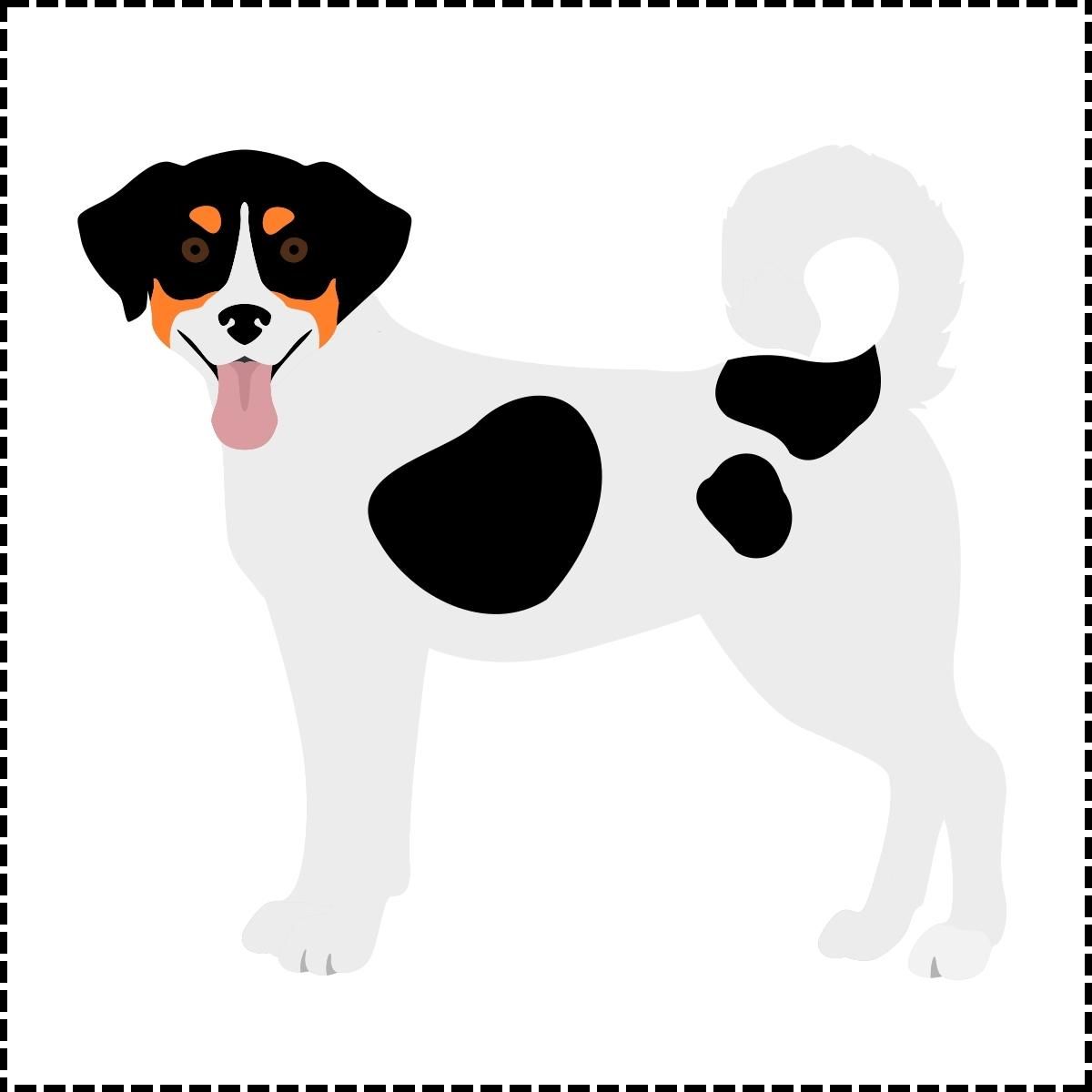
Appenzellers that are predominantly white likely get their large white markings from piebald (sP).
Mantle-patterned dogs (“Mantelschilt“) are likely heterozygous (S/sP) while mainly white dogs (“Schilt“) are homozygous (sP/sP) for the trait.
| E LOCUS | K LOCUS | A LOCUS | S LOCUS |
|---|---|---|---|
| E/E | ky/ky | at/at | S/sP |
| E/E | ky/ky | at/at | sP/sP |
| E/E | ky/ky | at/at | S/sP |
| E/E | ky/ky | at/at | sP/sP |
| E/E | ky/ky | at/at | S/sP |
| E/E | ky/ky | at/at | sP/sP |
Dilute

Dogs with two copies (d/d) may have diluted black (blue) or diluted brown (lilac) coats. Diluted eumelanin is a known faulty color in Greater Swiss Mountain Dogs.
I don’t know about any blue tricolor Appenzellers. But there might still be a very slim chance for dilution occurring in all the Sennenhunds.
| B LOCUS | D LOCUS |
|---|---|
| B/B | d/d |
| B/b | d/d |
| b/b | d/d |
Ticking
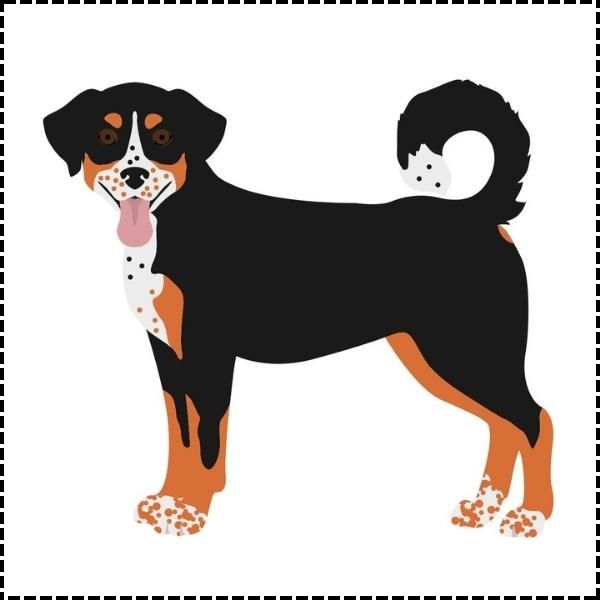
The breed standard lists “black ticks on white” as faulty color. Ticking can only appear inside the white markings where it produces small dots of color. Color-wise, these dots follow the pattern underneath the white markings.
Learn More
Links
[1] American Kennel Club (AKC): Appenzeller Sennenhund
[2] Fédération Cynologique Internationale (FCI): Appenzell Cattle Dog Breed Standard (pdf)
[3] Dreger et al. (2019). True Colors: Commercially-acquired morphological genotypes reveal hidden allele variation among dog breeds, informing both trait ancestry and breed potential. PLoS ONE 14(10): e0223995. https://doi.org/10.1371/journal.pone.0223995
[4] Theophil Studer. 1901. Die praehistorischen Hunde in ihrer Beziehung zu den gegenwärtig lebenden Rassen.
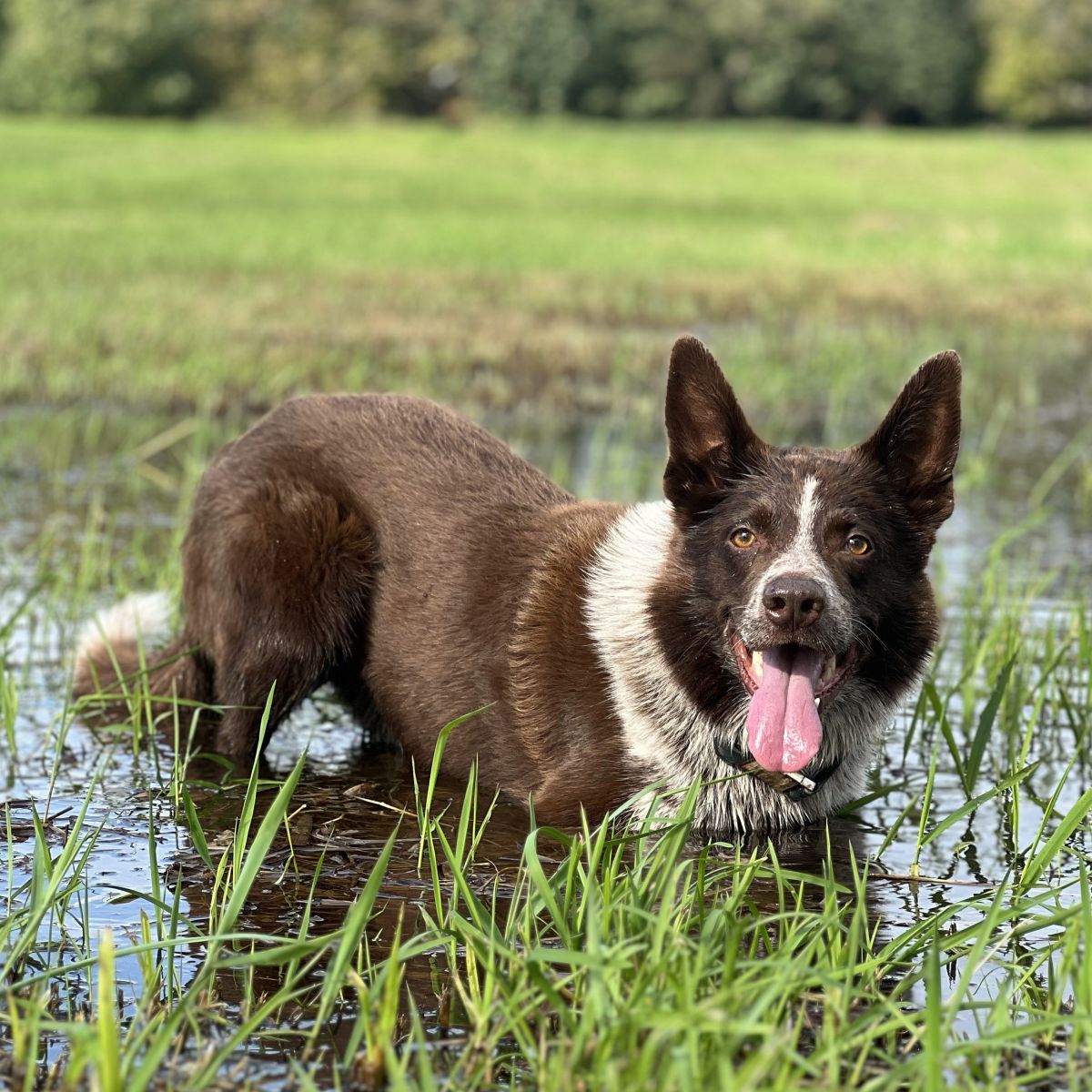
Hi! I’m Steffi. I am a biologist and a big time dog nerd. You are curious about coat color genetics? You’ve come to the right place! Read more.


